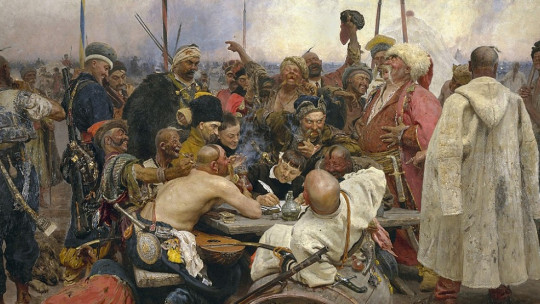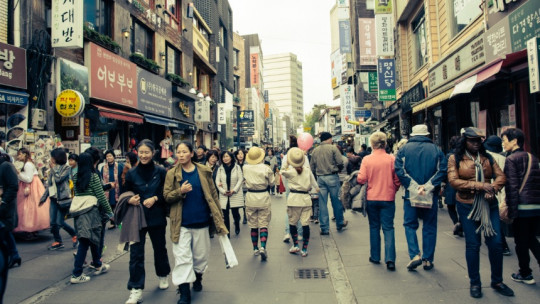
The communities known as kibbutz They have been part of Israel’s history for more than a century.
We are going to immerse ourselves in the history of these collective organizations to discover when they emerged, for what reason and what are the peculiarities that make them a practically unique phenomenon in society today.
What are kibbutzim and what was their origin?
The kibbutzim are communal agricultural organizations located in Israel They emerged in 1909, Degania being the first kibbutz located in the current territory of this country, which at that time belonged to the Syria of the Ottoman Empire. In fact, following the criteria that characterize a kibbutz, Degania would more closely fit the description of a kvutza, a similar community but of smaller dimensions.
This first community was created by twelve Jews of Russian origin, who fled the revolution that was beginning in that country. This is how these ten men and two women founded Degania, the first of many kibbutzim. The idea underlying this type of organization was that of socialist Zionism developed by the Ukrainian thinker Dov Ber Borokhov.
In addition to Borojov’s ideas, the great promoter of labor Zionism that ended up crystallizing in the kibbutzim was Aaron David Gordon. This ideologist derived his current of thought mainly from Leo Tolstoy. The main idea is that the freedom of a people is subject to their ability to achieve their own sustenance. This directive implies the control of agriculture.
Thus, The basis of every kibbutz is the work of the land belonging to the communal farm, something that the Jews could not do in Europe, since in most countries agricultural activities were prohibited. AD Gordon concluded that the creation of a Jewish state of their own required control of the land. This is how the kibbutz marked the beginning of the creation of the state of Israel.
There was also the situation that the majority of Jews were dedicated to activities in the service sector, some worked in industry and very few had jobs related to primary activities such as agriculture. Borokhov knew that this trend would have to be reversed to gain control of the land and make the socialist revolution triumph. That’s why agriculture aroused so much interest in these authors.
Main characteristics of the kibbutzim and their communities
After having taken a short historical tour of the origin of the kibbutz, we will now focus on knowing a little better about the main postulates that were established to generate these collective farms.
1. Collective
The first characteristic that a kibbutz must have is the concept of collectivity. Everything that remains within this community belongs to all its members Both the land itself and the material possessions to the work itself and the fruits obtained through it.
At first it was tried to be strict with this precept, but some conflicts made the rule slightly more flexible to allow the members of the commune to individually own some objects and also have a part of the salary for private use, apart from the needs of the kibbutz.
2. Importance of land work
In the previous section we had already seen the absolute importance that the founders of the kibbutz attributed to working the land itself. This precept was so strict that even Some members of some communities were even expelled because they were not willing to carry out agricultural work Over time, a certain laxity with respect to the norm has also been favored.
In fact, the kibbutzim that have survived to this day have mostly been those that, when the time came, focused on industrial development and thus achieved economic success that guaranteed the viability of the farm.
3. Workforce
Another of the central ideas of the functioning of the kibbutz is that the workforce had to come from the members of the community themselves. That is to say, The members own the means of production and at the same time represent their workers When the state of Israel was founded there were certain conflicts that had to do with following this norm.
This problem was generated by the idea that the workers had to be only the members of the communal farm, with no possibility of anyone from outside accessing it. The Israeli government saw this as an added difficulty for the nation’s new citizens to find a job that would allow them to prosper, since access was limited to members of the kibbutz.
As with the previous rules, over time it has been modified and today it is allowed and in fact it is common for external workers to carry out tasks within the kibbutz in exchange for a salary.
4. Equal pay
Following the rules established for the activities carried out in the kibbutz, It was concluded that it was necessary to establish a policy of equal pay for all members whatever the work they were doing and the difficulty inherent in it.
This does not mean that the salary is exactly the same for everyone, but rather that each member of the kibbutz receives financial compensation according to their needs, especially in the case of having dependent children. Logically, this policy applies to workers belonging to the kibbutz but not to those coming from abroad.
5. Rotation of activities
Not only must the salary be equal, but the different tasks of the commune must be carried out by all residents, on a rotating basis. Therefore, each individual will not be permanently assigned a job, but everyone will gradually change activities, so that all members of the kibbutz are responsible for all jobs and there are no fixed positions.
An advantage of this system is that All people will acquire the knowledge and skills required for any job, so they will be easily replaceable in case of illness or any other eventuality
6. Internal democracy
The list of kibbutz norms continues with an important proposition: there must be internal democracy in the community. This implies that any decision that affects the kibbutz, whether lightly or deeply, It must be decided by consensus among all those members of the group who wish to participate in the assembly called for this purpose
Therefore, it will not be obligatory to participate in all decision-making, but it will be a right to do so whenever the member of the kibbutz so decides.
7. Secularization
The last of the rules that were proposed for the correct functioning of these communities is that the kibbutzim They had to be governed by cultural Judaism but without having religion as a central axis, which entails a process of secularization. This means that Jewish traditions and festivities on these communal farms were more focused on community life and agrarian activities than on religion itself.
Kibbutz upbringing
The birth of the first children in the kibbutz brought with it a new situation that raised questions On the one hand there was the question of equality of activities, so it was tried to ensure that women did not move to a level in which their main activity was raising children and on the contrary they could continue to carry out all the tasks of the farm. , like the rest of the members.
For it parenting became an event shared by the entire kibbutz In this way, the generation of a child’s own identity was also encouraged, beyond the impositions of her parents. In fact, it was decided to create communal houses within the kibbutz where children could live together, have leisure time and receive their education. They even slept there.
In charge of the children were people with training in nursing and also in education. Thus, dependence on parental care was eliminated and children became a shared responsibility of the entire community, even economically, since their maintenance was managed through the shared expenses of the kibbutz.
The studies showed that even using this methodology, the attachment that children felt towards their mothers could not be replaced by that of a caregiver. They also discovered innate selfish behaviors, such as wanting to take toys rather than share them, which led them to conclude that certain behaviors had innate origins.
Today The rules regarding parenting have also been changing and therefore it is common for children to spend much more time with their parents compared to the dynamics that took place in the kibbutzim a few decades ago.








